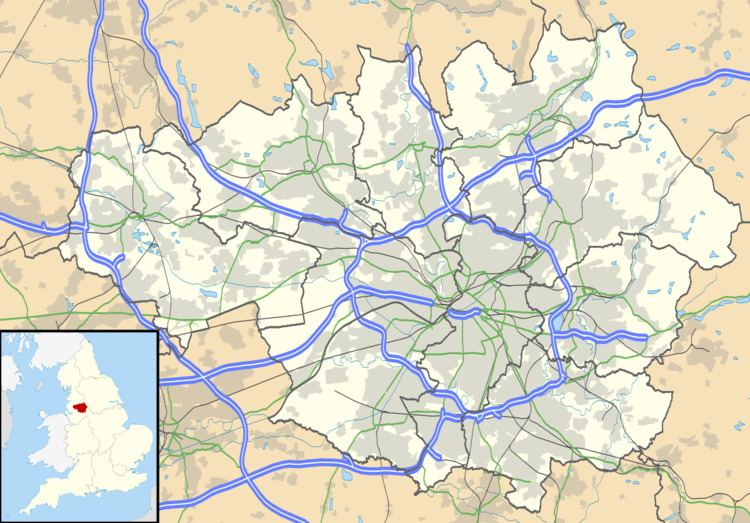OS grid reference SD654071 Sovereign state United Kingdom | Post town BOLTON Dialling code 01942 | |
 | ||
Hart common golf club hole 1 flyover
Hart Common is a hamlet in Westhoughton, in the Metropolitan Borough of Bolton, Greater Manchester, England.
Contents
- Hart common golf club hole 1 flyover
- Map of Hart Common Westhoughton Bolton UK
- History
- Amenities
- References
Map of Hart Common, Westhoughton, Bolton, UK
The area's name is taken from a prominent local family, the Harts. Historically part of Lancashire, it lies mainly along the A58 road.
History
In 1874 the Hewlett pits were sunk by the Wigan Coal and Iron Company and the hamlet was built to house the colliers and staff. The managers were housed in higher quality terraces on the north side of the A58, either side of Patterson Street. The colliery superintendent's house, 552 Wigan Road, overlooked the entrance to the colliery on Hewlett Street and a cast iron footbridge over the railway. Many men in the district found work in there.
Before this, the area was mainly agricultural. There was a shortage of labour when the pit first opened and many Irish agricultural labourers found work in the pits.
During the Franco-Prussian War in the mid-1870s, the miners were able to earn £1 per day. When the war ended the price of coal fell to 6 shillings per ton and Mr Hewlett called for large reductions in the miners' wages. These were strenuously opposed by the miners and a strike ensued. Newcomers arrived and settled in the village - the villagers said they had "arrived at Crows Nest Siding under a tar sheet", they were said to have a strange 'lingo'. The villagers did not take kindly to the newcomers, and for many years afterwards the remark "Thi fayther cum fr' under't tar sheet" was enough to start a fight.
By 1896 the Wigan Coal and Iron Company who owned the Hewlett Pits, employed 981 men underground and 182 surface workers.
The pits closed 1913 and 1931. A plaque on 552 Wigan Road (now the Saplings Day Nursery) reads:
IN MEMORIAM.. ..THE NAMES HERE RECORDED ARE OF THOSE MEN WHO GAVE THEIR LIVES FOR THEIR COUNTRY IN THE GREAT WAR AUGUST 1914 TO NOVEMBER 1918 AS WELL AS THE NAMES OF THOSE WHO OBTAINED MILITARY DISTINCTIONS IN THE WAR.. ..1&2 HEWLETT PITS KILLED..
This is followed by the names of those killed, and the men who received military honours
Amenities
The colliery site has been landscaped and returned to pasture. The principal roads in the hamlet were Hart Street and Common Street which retains its terrace of miners' cottages. The terraces on Hart Street were demolished many years ago and the rubble covered with earth and grassed over. Hart Street is the cobbled entrance way to Hart Common which contains a children's playground and football pitches. Coleman Milne, manufacturer of funeral vehicles, stretch limousines and other specialist vehicles is located at Hart Common.
The village has a golf course, converted from farmland and is home to Westhoughton Rangers Football Club, who play on playing fields on common land leased for a peppercorn rent from the Hart Common Mission Church Trust.
Hart Common once had two public houses, a post office, a Co-op grocery and butchers, two general stores and two other butcher's shops. These are gone. The neighbouring hamlet of Marsh Brook reduced in stature, is incorporated into Hart Common. An independent greyhound racing stadium used to stand at Marsh Brook, but was demolished in 2014. Marsh Brook borders the adjacent borough of Wigan
